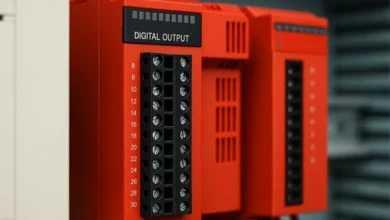Deepfake Detection Explained: How Technology Unmasks Digital Deception

The boundaries between real and fake are getting more and more thin in the modern digital world, and this is possible due to deepfakes. Such fake videos, audio files, and pictures that are quite persuasive, yet completely artificial, are developed through sophisticated artificial intelligence (AI) systems, and thus ordinary citizens will not be able to recognize the difference between genuine and falsified content. The increased popularity and the high level of realism of deepfakes have prompted the necessity of deepfake detection to be critical.
In this paper we will demystify how deepfake technology functions, the danger of it and most importantly how Deepfake detection software and techniques are being used to protect individuals, organizations and societies in the face of this new digital trickery.
What is a Deepfake?
A deepfake is a fake media file whereby a face, a voice, or even an entire body of one person is changed or replaced with another. Such is usually performed with deep learning, a subdivision of AI utilizing neural networks to evaluate and imitate the characteristics and behavior of people. The deepfake creators are able to create hyper-realistic content that looks authentic by training models using thousands of images or frames of videos.
Despite the fact that the technology was first created to serve the entertainment and creative spheres, it has rapidly been used in darker purposes since then- political misinformation and financial fraud, defamation, and identity theft.
The Rising Menace of Deepfakes
Deepfakes may have dramatic repercussions. Manipulated videos of influential persons expressing inciting speech can influence the population, mess up elections, and cause a wave of confusion. At an individual level, deepfakes have been used as a weapon to cyberbully, in revenge pornography and social engineering attacks. Companies are also threatened-CEOs and executives have been spoofed on fake video calls to give approvals on financial transfers or leak confidential information.
The stakes are so high that identifying and preventing deepfakes before they cause damage has become one of the priorities.
Deepfake Detection Process
It is not the same as when one can tell there is a bad Photoshop job. Such media files produced by AIs can appear identical to real videos, particularly to a human eye. Enter deepfake detection technology: using various methods it can reveal manipulation.
These are the main practices applied here:
1. Machine Learning Algorithms and AI
Deepfakes are detected in the same way that they are made: with the help of AI. To detect deepfakes, deepfake detection models are trained to observe visual and auditory cues, such as unnatural blinking, uneven lighting, weird facial gestures, or audio mismatch. Such algorithms are continuously advancing to match with more advanced deepfakes.
2. Biometric Analysis
Biometric-based detection instruments evaluate facial expression, lip-synchronization and even micro-expressions. As an example, certain tools examine the way light reflects in the eyes or the way the facial muscles behave during the speech, which is hard to reproduce with the deepfake algorithms.
3. Blockchain & Digital Watermarking
Blockchain and digital watermark The blockchain technology and digital watermarks are being used by some platforms to verify originality of content. Such solutions can either add invisible tags in authentic videos or trace their source and edits so that platforms can check the authenticity of the content.
4. Forensic Frame Analysis
Forensics tools may detect artifacts or inconsistencies created in the process of deepfake generation by analyzing videos frame-by-frame, e.g. anomalies at the pixel level, compression artifacts, unusual transitions.
Deepfake Detection in the Real World
1. Social Media Platforms
Facebook and TikTok are the two largest platforms that are installing deepfake detectors to warn and delete manipulated videos that cause misinformation.
2. Financial Institutions
Banks and fintech firms are implementing biometric liveness detection as a means of verifying the real identity of a human being behind a transaction and not an artificial fake.
3. Media & Journalism
To determine the authenticity of videos, news agencies have to use detection software to publish the video. This assists in maintaining journalism integrity in the era of visual manipulation.
4. Law Enforcement
Deepfake detection is used by authorities in the analysis of evidence in cybercrime cases, especially impersonation or fraud.
The Future of the Challenges
Though the deepfake detection technology is developing, it is in a never-ending arms race with deepfake creators. As generative AI tools get smarter and more widely available, synthetic content will become harder and harder to detect. It is already simple to create convincing content and it could be done in seconds using open-source deepfake generation tools and AI voice cloning software.
The other hurdle is the awareness of the people. Not everyone knows how persuasive deepfakes have become, and that is why there are more possibilities of being deceived by manipulated information. The training of users and the enhancement of digital literacy are some crucial parts of a more comprehensive defensive approach.
Final Thoughts
Deepfakes are not only computer tricks, but effective means of deceit, manipulation, and fraud. Nevertheless, through proper technology and alertness one can be ahead of this menacing trend. AI, biometrics, and forensics-driven deepfake detection tools are a frontline solution to the war on misinformation and digital impersonation.
The digital world keeps changing, and so should our tendency to identify between the genuine and the counterfeit. It could well be the future of online trust.



